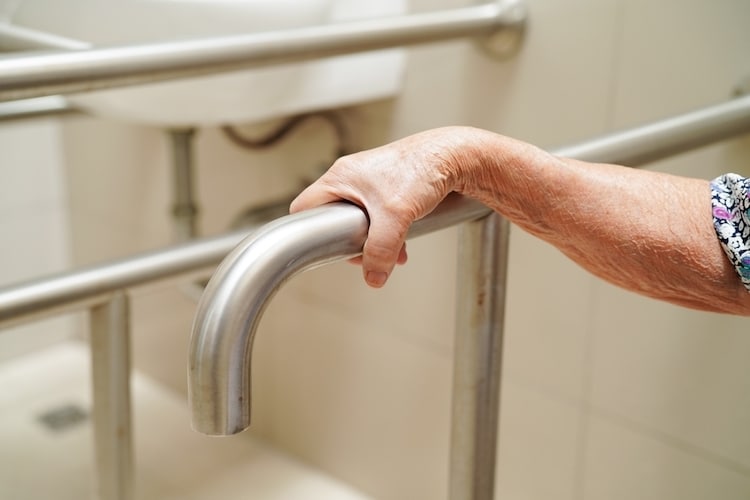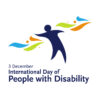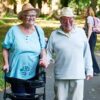As we get older, our priorities change, and one of the most important things we all hope for is the ability to age in the comfort of our own home. Staying at home instead of moving into a facility not only helps maintain a sense of independence but also promotes emotional well-being and familiarity. However, to age safely and comfortably at home, it’s crucial to make some thoughtful modifications to the living environment.
At Premium Home Care Service (PHCS), we understand how important it is to create a safe, comfortable, and supportive space for seniors. Whether you’re looking for advice on small changes or more significant alterations, here’s a guide to essential home modifications that can make all the difference for your safety and comfort as you age at home.
1. Improving Mobility and Accessibility
As we age, mobility can become more challenging. For seniors, easy access to different areas of the home is key to maintaining independence. Here are a few modifications to consider:
- Ramps and Thresholds: If you have steps leading into your home or inside different rooms, installing ramps or thresholds can make a huge difference. This is especially helpful for people using walkers or wheelchairs, making it easier for them to move freely around the house.
- Wider Doorways: Wider doorways allow easier access for mobility aids like wheelchairs or walkers. If you’re planning on long-term home support, it might be a good idea to widen certain doorways in the home to make movement smoother and safer.
- Non-slip Flooring: Slips and falls are a major concern for seniors. Replacing slippery flooring with non-slip materials can greatly reduce the risk of accidents. Look into options like textured tiles, vinyl, or rubber flooring, especially in areas like bathrooms and hallways.
2. Bathroom Modifications for Safety
The bathroom is one of the most dangerous areas of the home for seniors due to wet surfaces and the need for balance while using the toilet, shower, or bathtub. To ensure safety and comfort, consider these modifications:
- Grab Bars: Installing grab bars near the toilet, in the shower, and along the bathtub can provide seniors with the support they need to stay steady. These simple yet effective modifications help with balance and prevent falls.
- Walk-In Showers or Bath Lifts: For seniors with mobility issues, a walk-in shower with a low or no threshold is a game changer. Bath lifts are another great option, allowing a senior to lower and raise themselves in and out of the bath with ease.
- Raised Toilet Seats: A raised toilet seat can make it easier for seniors to sit down and stand up without straining their muscles. It’s a small modification but makes a big difference in terms of comfort and safety.
- Better Lighting: Bathrooms often have poor lighting, which can increase the risk of accidents. Ensure that the bathroom is well-lit, particularly around key areas like the sink, shower, and toilet.
3. Kitchen Modifications for Ease of Use
In the kitchen, it’s essential to make adjustments to prevent accidents and make cooking or meal preparation easier for seniors. Here are some modifications to consider:
- Lowered Countertops: For seniors who use a wheelchair or walker, having countertops at a lower height makes meal prep easier and more accessible. You might also want to install pull-out shelves or drawers to keep kitchen essentials within reach.
- Easy-to-Use Appliances: Look for appliances with simple controls, like touch-button stoves or microwaves with easy-to-read displays. Automatic shut-off appliances are also great for safety, as they reduce the risk of leaving something on when it shouldn’t be.
- Under-Cabinet Lighting: Proper lighting in the kitchen is essential. Install under-cabinet lights to ensure that work areas, like countertops and stoves, are well-lit. This reduces the chances of accidents, especially when chopping food or cooking.
4. Better Lighting Throughout the Home
Good lighting is a must for anyone aging at home. Poor lighting increases the risk of trips and falls, particularly in the evenings or in darker areas of the house. A well-lit home is not just about visibility, it’s about safety.
- Motion-Activated Lights: Consider installing motion-sensor lighting in key areas like hallways, bathrooms, and staircases. These lights will automatically turn on when they detect movement, providing extra visibility at night.
- Bright, Even Lighting: Make sure rooms are evenly lit, with no dark corners or spots that could cause tripping hazards. Use LED lights with a warm tone to reduce eye strain while still providing clear, bright light.
- Nightlights: Place nightlights in hallways, bathrooms, and staircases. A gentle light at night can help prevent falls when getting up in the middle of the night.
5. Creating a Safe Bedroom Environment
It’s crucial to create a safe and comfortable bedroom. Some adjustments you can make to improve safety include:
- Adjustable Beds: An adjustable bed allows seniors to raise or lower the head and foot of the bed, which can be helpful for those with mobility issues or chronic pain. This modification promotes better sleep quality and reduces the effort needed to sit up or get out of bed.
- Easy-to-Reach Storage: Keep essential items within easy reach of the bed, so there’s no need for stretching or bending. This includes things like reading materials, glasses, or a phone.
- Clear Pathways: Ensure that there are no tripping hazards near the bed, such as rugs, cords, or furniture. A clear, open space around the bed makes it easier and safer to move around.
6. Outdoor Modifications for Independence
Spending time outside can have a positive impact on mental and physical health. To make outdoor spaces safer and more accessible, consider these changes:
- Handrails on Steps: If there are steps leading to your front or back door, adding sturdy handrails can help seniors navigate these steps more safely.
- Smooth Pathways: Ensure that any outdoor pathways are smooth, even, and free of obstructions. If you have uneven surfaces like gravel or cracked pavement, it’s a good idea to repair or replace them.
- Seating Areas: Add comfortable seating areas outside where seniors can enjoy the outdoors without straining. Look for chairs or benches with armrests to make it easier to sit down and get back up.
7. Home Support from Premium Home Care Service (PHCS)
At Premium Home Care Service (PHCS), we’re committed to helping seniors live independently and safely in their own homes. Our expert team of carers provides personalised home support tailored to each person’s unique needs, ensuring that the right modifications and care are in place.
Whether it’s assistance with daily tasks, medication management, or simply providing companionship, PHCS is here to support you in maintaining your safety, comfort, and independence at home.
Conclusion
Aging at home doesn’t have to mean sacrificing comfort or safety. With a few thoughtful modifications, you can create an environment that promotes both independence and well-being. Whether you’re making small adjustments or investing in more significant changes, these home modifications can help you or your loved one age gracefully and securely in the comfort of your own home.
If you need support or guidance on home modifications or personalised aged care services, reach out to Premium Home Care Service (PHCS) today. We’re here to help you every step of the way!







